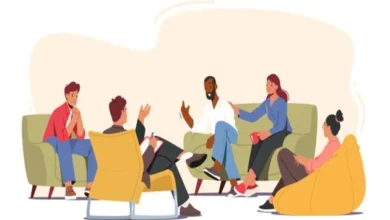Psychological ways to understand others

It can be difficult to understand other people, and it’s also true to assume how they feel when talking to you. But there are still several ways to “read” others and understand someone else’s mood.
6 psychological ways to understand others
1. First, notice the “basic level”
You are not immune from perceptual errors even if you are naturally wise. From time to time, each of us is tempted to look at someone and make an assumption about their personality by how they are dressed and how they speak or look.
However, such assumptions rarely reflect reality. A person’s personality is much more complex than a set of the above factors. To learn how to “read” other people and understand them, you first need to determine their “basic level” — so conditionally, you can call the patterns of behavior that they adhere to. You will have to observe the person and look closely at how he behaves more than once before drawing any conclusions about him.
Let’s use an example to explain why this is important. Imagine you are talking to a friend, and he starts rubbing his nose when he talks about his achievement. From the point of view of body language, such a gesture may mean that a person is trying to lie or embellish what he is talking about.
But there is also a downside to the coin: perhaps you are facing an allergic person who rubs his nose occasionally because he feels bad. A person can do this not because of lying but because of excitement and nervousness. Thus, if a friend often rubs his nose, regardless of whether he is talking or silent, then this may be one of his basic level traits. That is, such behavior is quite normal for him and does not reflect his hidden intention to lie to you.
It’s a different situation but with the same gesture: your friend not only rubs his nose when he tells you something but also looks away, avoids eye contact, and answers the clarifying questions you ask in monosyllables. This is an example of behavior that goes beyond the basics, and it’s worth thinking about maybe he wants to hide something from you.
2. Always consider the context
You may know a lot about what things body language can tell you. For example, you know with certainty that crossed arms on your chest are a closed pose, which is most often a reflection of internal discomfort or a desire to close oneself off from the interlocutor.
However, it is not worth drawing conclusions based on this knowledge alone if you want to make your conclusions as correct as possible. It is always important to look at a person’s behavior and the context of their situation. The same example with crossed arms: your interlocutor can sit like this not only because of emotional feelings but also because of the cold in the room and if his chair does not have armrests. It is important to develop observation skills so as not to miss contexts, make correct assumptions about a person, and understand him without words.
3. Listen to the speech patterns

Each of us has specific speech patterns that we adhere to by evaluating and analyzing what the other person says and how we will understand him better. For example, if he speaks loudly and clearly, he may be an extrovert, a leader, or get excited about what he is talking about. A person with a quieter tone often turns out to be an introvert, someone with low self-esteem, or someone not too interested in talking about a given topic.
Also, someone who speaks very fast is often characterized by impulsivity and anxiety, and people who talk slowly and steadily have a high degree of conscientiousness. So it’s worth paying attention to what you’re being told and how. Of course, this has its own “errors.” To avoid them, do not forget to analyze the context of the situation.
4. Practice open-minded thinking

If you want to understand other people better, practice open-minded thinking. This means you do not condemn the thoughts and feelings of another person and yourself because they may differ significantly. In other words, you strive for objectivity, creating an environment where you can sensitively treat other people’s emotions and beliefs.
It is essential to be open to the possibility that not everyone adheres to the same position and does not always meet your expectations. This kind of thinking helps to understand other people better and perceive them with all the respect and empathy they deserve.
5. Learn to attack the problem, not the person
Misunderstandings often lead to serious conflicts. But to be more aware of what’s happening in other people’s heads, it’s essential to learn how to attack the person and the problem. The next time you find yourself in a situation with a clash of opinions, focus on how to solve it.
Do not turn to personal attacks or insults of the interlocutor, even if you feel that he is completely wrong. By talking about a decision and not the other person’s shortcomings, you will allow them to express themselves and their thoughts. The more he talks about his emotions and what led to certain beliefs and actions, the easier it will be for you to understand why he holds a certain opinion.
6. Use guided images

To understand other people, it is worth using this useful technique. It consists of the fact that you must sit down and reflect on the connection between you and others. Think about the fact that your interlocutor maybe some part of you. For example, his strengths can balance your weaknesses, and vice versa.
This technique helps you look differently at the person you are communicating with, become wiser, and start a calmer dialogue. It aims to make it clear to oneself that our differences from others are not a stumbling block but a natural human nature that must be tolerated.




